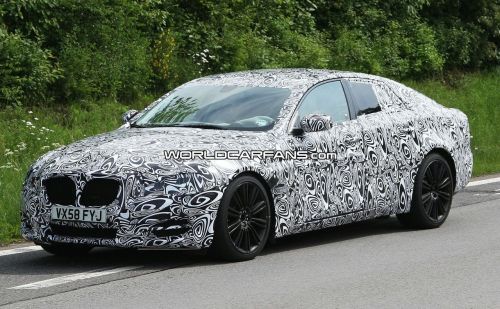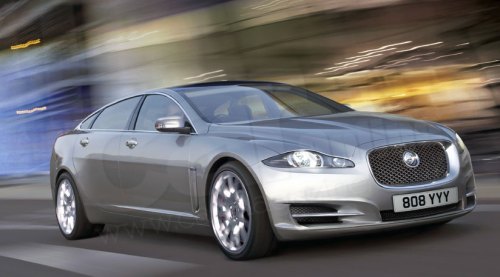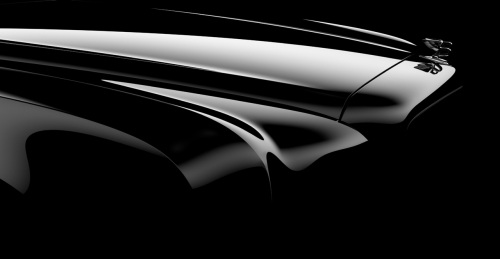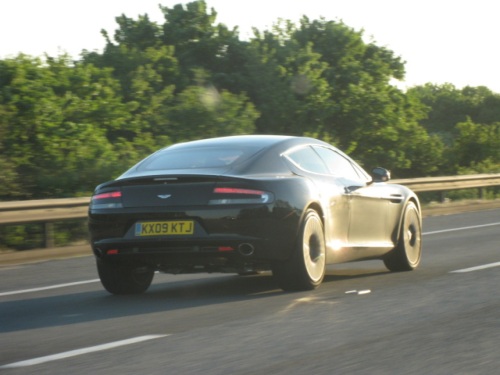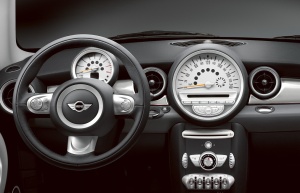The Good: Powerful engine, lots of performance for little money.
The Bad: Torque steer can be intimidating, uncooperative shifter.
The Verdict: A sports car for the poor – with room for four.
When arranging for us to test the Mazdaspeed 3, the Mazda PR representative seemed almost a little contrite about our opinion of the regular Mazda3 we reviewed last August. “I hope it finds your favor better than the Mazda3 did,” he remarked in an email.
We were a little puzzled. After all, it wasn’t that we disliked the 3; it was a playful little economy car, even if it was laden with malapropos features like heated leather seats and xenon headlamps that turned with the front wheels. It was just awfully pricey – $24,455 is a lot to pay for a compact car.
But if they were concerned we were going to be harsh on the Mazdaspeed3 for the same reasons we took the regular 3 to task for…no worries, Mazda. Because the Speed 3 is not an overpriced compact car. It’s a vastly underpriced sports sedan.
Like any good sports car, the Speed 3’s greatness ultimately boils down to two factors: the engine and the suspension. And this engine is a doozy – a 2.3-liter inline four-cylinder with a hefty turbocharger bolted to it, pumping the little engine up to 263 horsepower and 280 lb-ft of torque. Given the car weighs a mere 3,221 pounds dry, this adds up to some serious whee!
But unlike most cars with this much power, the Mazda directs all that power to the road through the front wheels, and the front wheels alone. When so much power is directed through the same wheels being used to aim the car, it results in torque steer – when the force of the engine is strong enough to tug the car off course. In most front-wheel-drive cars, the condition is too slight to be noticed – but in the Speed 3, it’s as subtle as the latest Roland Emmerich film.
Mazda’s official line is the torque steer adds to the car’s fun factor, and while I certainly wouldn’t want the front wheels doubling as the drive axle on most performance cars…I gotta agree with the good folks at Mazda. It is pretty damn fun – once you get used to combating the wrenching wheels. (Though extensive driving may lead to the development of Popeye-like forearms.)
But the torque steer wouldn’t be much fun if the car didn’t blitz off the line like Reggie Bush. (And yes, I know that defensive players blitz, while Reggie is an offensive player.)
(Ed: Actually, Terrell Owens is an offensive player – Reggie is just a running back. Zing!
Oh, come on! That was gold!)
Sorry about that. The point being, this little sucker is fast. Given a twenty-foot gap to accelerate between the stop sign and the angry traffic of the FDR Drive, I revved up the engine, dumped the clutch – and wasn’t entirely sure I hadn’t been rear-ended by a Super Duty.
Having the turbo on your side means you’ve got power pretty much whenever you want it. Turbo lag is just apparent enough to be noticeable, without giving you the sort of hyperdrive effect seen on such cars as the old Porsche 930. By highway speeds, the tight-ratio six-speed manual gearbox has the engine spinning fast enough to make passing power available right frikkin’ now – and that’s just a safety feature, dude.
As for that stick shift – while I have to award major props to Mazda for only offering the Speed 3 with a manual transmission, the tranny itself does have a couple flaws. While running the engine at higher RPM on the highway is great for keeping the turbo in play, it doesn’t do much for fuel economy. And sixth gear is located awkwardly far down and to the right; several times I tried to upshift from fifth gear only to be shunted back into fourth. A firm hand is required to enable top gear.
As for the car’s handling, the suspension and tires don’t let the promise of that ballsy engine down. The Speed 3 romps around corners with glee; from the first turn you take, it’s apparent the car wants to be driven hard. Steering feel is a bit heavy at lower speeds; however, it loosens up as velocity increases, and while it may not be the most communicative steering rack out there, it’s not really complaint-worthy, either.
Thankfully, Mazda managed to find a pleasant balance between sporty and ridiculous in the car’s styling. While some automakers tend to slap all sorts of gaudy accoutrements on their sporty low-priced models, Mazda was content to leave the already wild-looking 3 more or less alone. The biggest difference can be seen up front, where the Speed 3 boasts a deep hood scoop and a gill-like guard on the front air intake that only plays up the regular 3’s marine life resemblance.
In addition, the Speed 3 only comes in 5-door hatchback form, which prevents it from suffering from the odd-looking pinched rear common to the sedan version of the 3. Be it in regular or speedy form, the hatch is by far the more coherently styled of the Mazda3 lineup.
Inside, things remain pretty similar to the conventional 3. The seats, while cloth instead of leather, are just as comfortable as the bovine thrones in the Grand Touring edition we tested several months ago. The only real differences are a handful of little touches – red trim on the seats and shifter, and a small electronic boost gauge between the tach and speedometer to tell you how much exhaust the turbo is forcing back into the engine.
As for options, the Speed 3 forgoes many of the fancy options hoisted on our last high-end tester – and is little the worse for wear. My tester was equipped with the only big-ticket item on the options list: the $1,895 Tech Package, which adds a 10-speaker Bose stereo with 6-disc CD changer and satellite radio, a keyless entry system allowing the driver to lock, unlock or start the car without removing the key from his or her pocket, and a navigation system.
About that navigation system…well, it’s not the greatest factory guidance system out there. The screen is conveniently mounted high on the dash, close to the driver’s eyeline; however, it’s about the size of a Triscuit. The only way to control the system is via small buttons on the steering wheel, meaning the driver can’t delegate programming duties to a passenger. Plus, while the computer claimed to automatically dim the screen at night, it failed to do so in my car – forcing me to drive around with a blindingly bright square of light in my eyeline. Ultimately, I had to pull over and manually switch it over to night mode – and switch it back and forth every twelve hours or so.
Still, for all its faults, the navigation system did seem as though it had been put together for people who love to drive. While heading back to New York City from Pennylvania’s Bucks County late one night, the system pointed me down a series of increasingly smaller and windier rural New Jersey roads instead of sending me straight to the four-lane highway I’d taken on the way down. I don’t think the back roads were any quicker – but they were certainly more fun.
The Bottom Line:
Even in this day and age, when automakers are making 550-horsepower sport-utilities and muscle cars roam the streets once more, the Mazdaspeed 3’s combination of performance, frugality and usability stands out. For less than $24,000, Mazda has created a car that can seat four adults or carry a good amount of cargo while performing like an honest-to-God sports car.
This is the kind of car that reminds people who love to drive where that love comes from. It was in pursuit of cars like this that led me to start College Cars Online – affordable, fun cars suited for young people. If we awarded a College Cars Online Car Of The Year (we’re not – but stay tuned for next year), the Mazdaspeed 3 would be at the head of the pack.
Base Price/Price As Tested: $23,945/$25,840
0-60: 5.8 seconds (courtesy Car and Driver)
Fuel Economy: 18 city/25 highway (EPA estimate)
Competitors: Subaru Impreza WRX, Volkswagen GTI, Honda Civic Si






